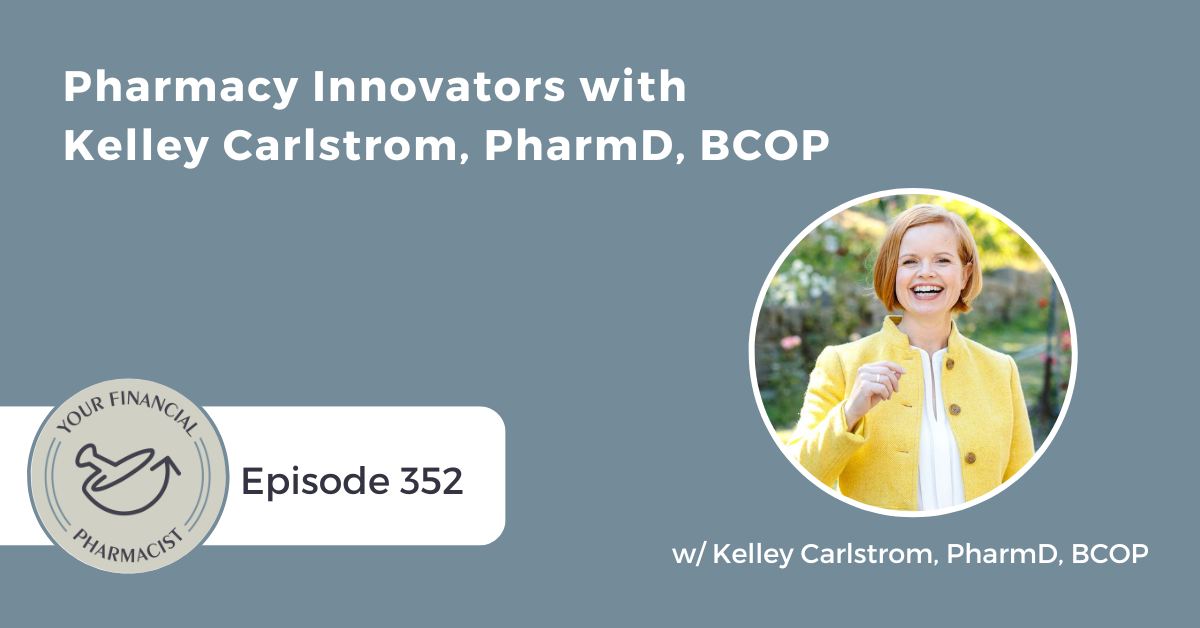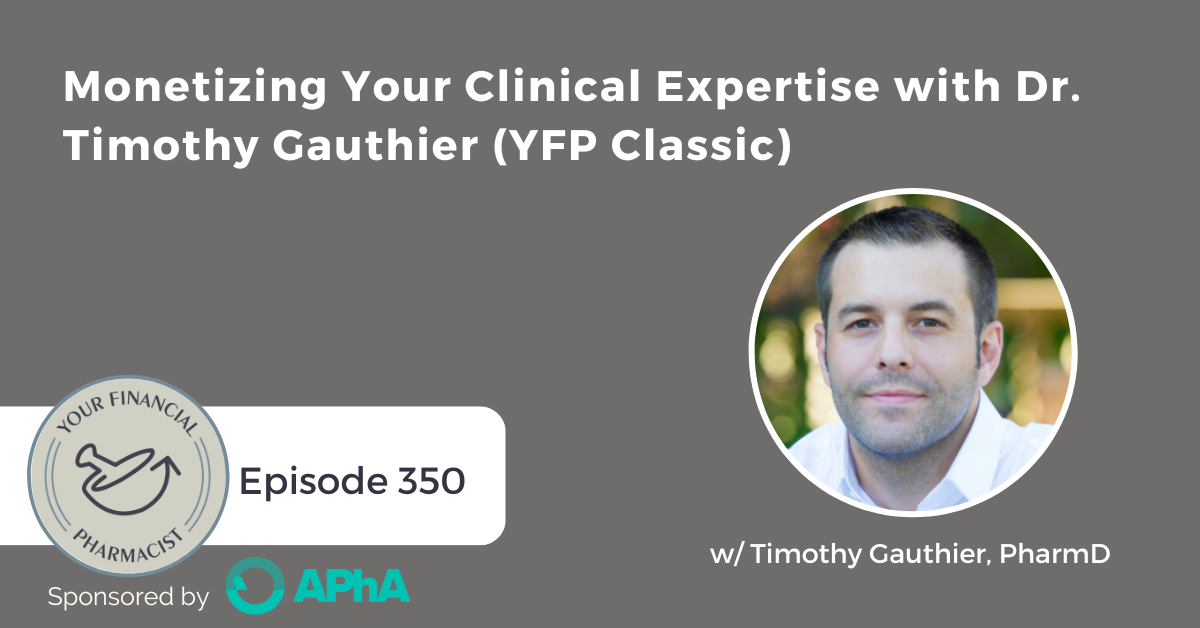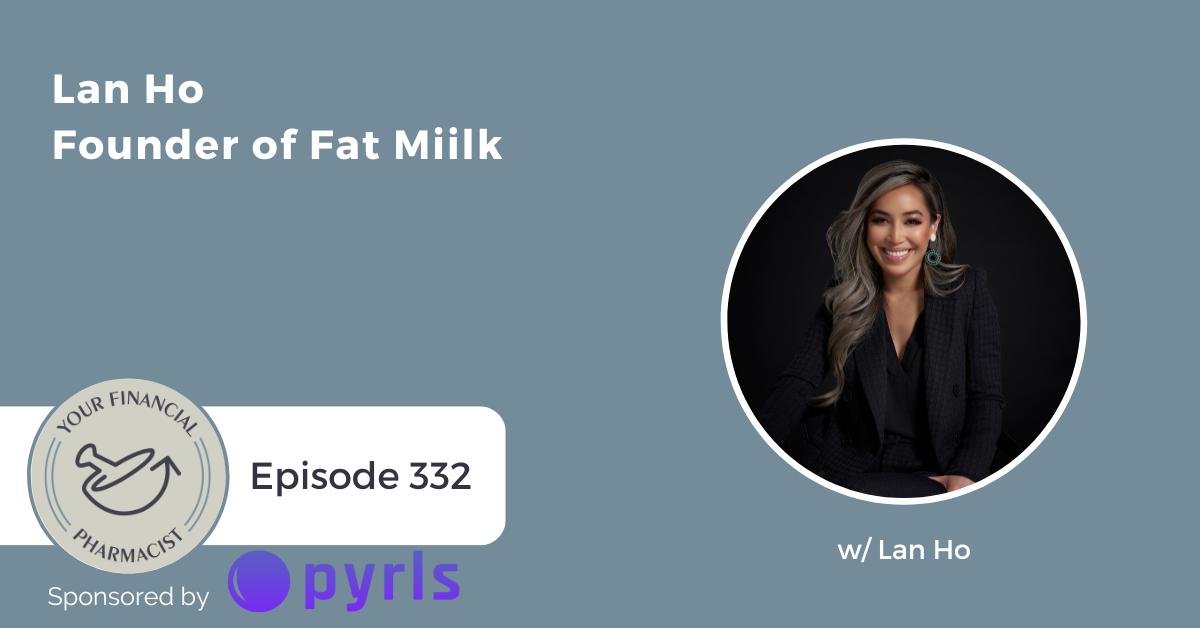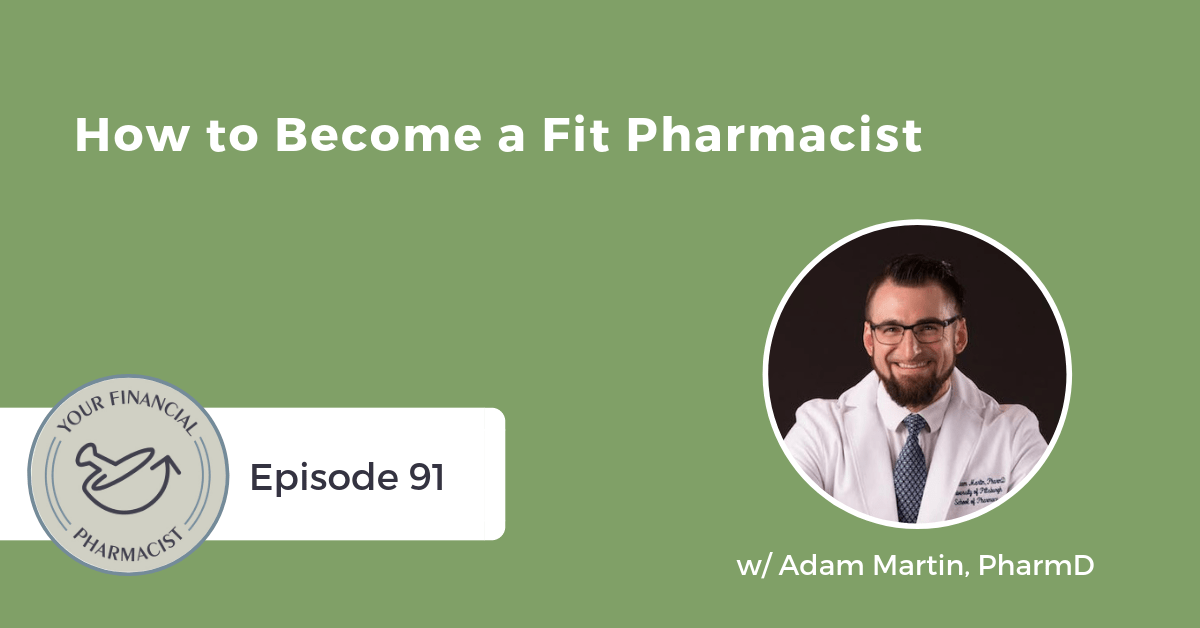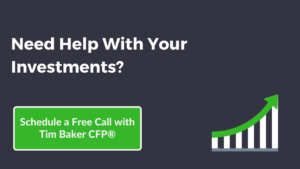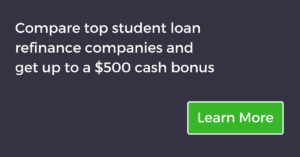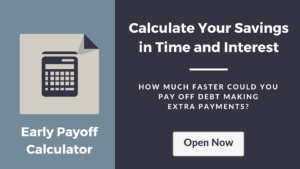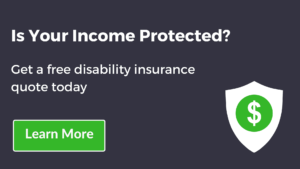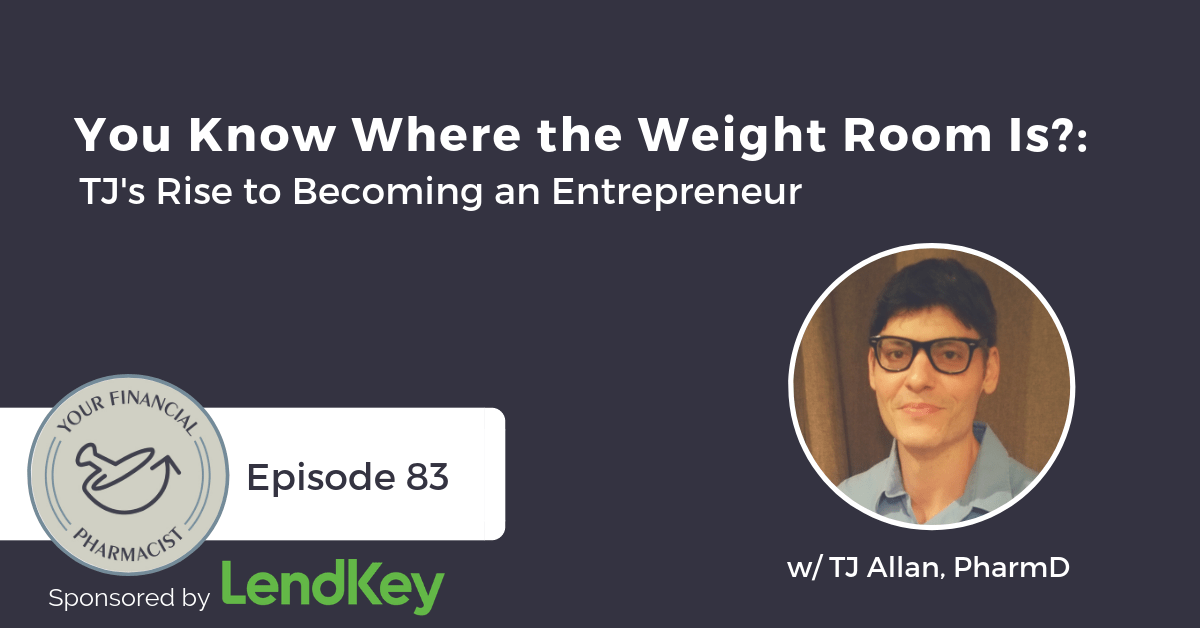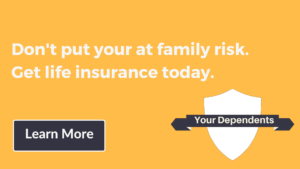In another episode of the Pharmacy Innovator series, Dr. Kelley Carlstrom, CEO and founder of KelleyCPharmD, discusses entrepreneurship in oncology pharmacy.
Episode Summary
On this episode, we have another segment of the YFP Podcast’s Pharmacy Innovator series! Hosted by Corrie Sanders, PharmD, this series is tailored for pharmacists venturing into entrepreneurship, featuring stories and strategies for aspiring pharmacy entrepreneurs.
This week, we delve into the dynamic world of entrepreneurship within oncology pharmacy with Dr. Kelley Carlstrom. Kelley is a board-certified oncology pharmacist and CEO and founder of KelleyCPharmD, which addresses crucial gaps in clinical oncology training. Dr. Carlstrom shares her experiences working in traditional and non-traditional settings, healthcare technology, insights on her transition from employee to entrepreneur, her evolving business model, and opportunities in oncology for pharmacists. Kelley also discusses how to monetize your expertise and the value of communities when starting a business.
About Today’s Guest
Kelley Carlstrom is the CEO and founder of KelleyCPharmD, an education company that fills the considerable gap in clinical oncology training. She is passionate about democratizing oncology pharmacy education and increasing accessibility and inclusion through her unique L.E.A.R.N Oncology Method.
Kelley received her Doctor of Pharmacy from The University of Colorado and completed post-graduate residency training at Beth Israel Deaconess Medical Center and Dana-Farber Cancer Institute in Boston, MA.
She is a board-certified oncology pharmacist that has worked in a variety of traditional and non-traditional settings including at large academic and small community cancer centers, as a consultant for a large electronic medical record implementation, and in the healthcare technology space helping create digital products for oncology clinicians and patients.
Kelley is also a prolific content creator, sharing clinical and motivational pearls about oncology. She is part of the LinkedIn Top Voices program, an invitation-only program that recognizes and celebrates the most influential and engaging professionals on LinkedIn.
Key Points from the Episode
- Entrepreneurship pathway in oncology pharmacy with Dr. Kelley Carlstrom. [0:00]
- Career transition and business ideas for pharmacists. [2:34]
- Starting a business in oncology and program design. [6:24]
- Building a successful oncology pharmacy business model. [12:27]
- Transitioning from consulting to entrepreneurship with a pharmacist. [18:00]
- Leveraging clinical skills for business growth. [23:40]
- LinkedIn usage and its impact on pharmacy businesses. [28:37]
- Oncology pharmacy roles and opportunities. [36:07]
- Oncology pharmacy training and business model. [42:27]
- Entrepreneurship and decision-making with KelleyCPharmD. [49:35]
Episode Highlights
“You know, once you have a problem, it’s great. But then you have to figure out what’s the best way to solve it both for the both for the customer and for you. Like you don’t want to build a business that you don’t want to run.” – Kelley Carlstrom [7:44]
“So I think when the number one thing I would encourage pharmacists to do is to connect with people that are interesting to them, not just you know, other pharmacists.” -Kelley Carlstrom [30:20]
“When I got into entrepreneurship, I realized you need to make decisions very quickly. And if you’re always second guessing yourself, it’s not you’re you’re not going to be successful.” -Kelley Carlstrom [48:11]
“There are no bad decisions in entrepreneurship. It’s just you have to get off of the table and start walking and start doing things. And that’s how you learn.” – Kelley Carlstrom [48:55]
Links Mentioned in Today’s Episode
- YFP Podcast 217: How Kelley Used Her Clinical Expertise to Build a Business
- KelleyCPharmD: Oncology Training for Pharmacists
- Kelley Carlstrom on LinkedIn
- Corrie Sanders, Huna Health on Instagram
- Subscribe to the YFP Newsletter
- YFP Planning
- Tim Ulbrich on LinkedIn
- YFP on Instagram
- YFP Facebook Group
- Your Financial Pharmacist
- YFP Disclaimer
- YFP Newsletter
Episode Transcript
Corrie Sanders 00:00
Hi YFP community, Corrie Sanders here, host of the Pharmacy Innovator segment of the YFP Podcast. Pharmacy Innovators is designed for pharmacists navigating the entrepreneurial journey. In this series we feature stories and strategies that help guide current and aspiring pharmacy entrepreneurs. Today we have Dr. Kelley Carlstrom, known on social media as the oncology pharmacist. Kelley is the CEO and founder of Kelley C PharmD, an education company that fills a considerable gap in Clinical Oncology training. Dr. Carlstrom is a board certified oncology pharmacist that has worked in a variety of traditional and non traditional settings. This includes a large academic medical center, small community cancer centers, and then the healthcare technology and startup space. Kelley is also a prolific content creator and was recently invited to be part of the LinkedIn top voices team, an invitation only program that recognizes and celebrates the most influential and engaging professionals on LinkedIn. Dr. Carlstrom is a returning guest the podcast and was featured in August of 2021 on episode 217. We will link to that episode in the show notes as it provides great detail about Kelley’s background and pharmacy journey. Today we speak to Kelley about the timing for her jump from employee to entrepreneur and dive into her unique business model how her business has evolved over time, and opportunities in oncology for both Kelley and the pharmacy profession as a whole. Kelley share some great lessons surrounding monetization of her expertise as an oncology pharmacist, to include the value of various communities and reflections on decision making both inside and outside of clinical practice. Now that we’ve set the stage, let’s dive into today’s main event. Our incredible guest, Dr. Kelley Carlstrom. Kelly, welcome back to the podcast. It’s great to have you.
Kelley Carlstrom 01:46
Thank you so much. I’m excited to chat again.
Corrie Sanders 01:49
Well, I know that you and Tim recorded in August of 2021. And during that time, you guys did a great job of really diving into your educational background, your pharmacy career path, what we want to really dive into today is that entrepreneurship pathway, and what exactly that looked like for you when that started in your career. And we’ll get into some details about your mindset and growth. So let’s start with really diving in to the consulting portion of your career. Before that you were in a large academic medical center, you were in an outpatient oncology clinic, and then you transitioned into consulting. So let’s talk about that consulting. How did you find that job? What important mindset shifts happened during that job? And how did that ultimately set you up for success with where you are now?
Kelley Carlstrom 02:34
Yeah, I love talking about this transition, because it was completely unexpected. In my career, I thought that I would be in a clinical practice role my entire career, you know, I spent a decade training in school and in residency to get that type of role I was in, and then all of a sudden, I was I was entertaining, moving out of that role. And I really had a lot of doubts and a lot of conversations with myself during that time about whether I really wanted to do that. And what it came down to was me kind of thinking through what’s the worst that could happen. You know, it sounded like a really interesting opportunity, this consulting. And being in clinical practice was kind of the safe bet. Like I knew I would always have a job that would be very, very comfortable. And consulting was a complete black box. I knew nothing about it. I didn’t really know what they were hiring me to do, which was a Cerner implementation, I had always worked with Epic in the hospitals I worked at. So it was very scary. And I just decided to jump in and see what doors it opened. And it opened a lot of doors both. From a job perspective, and like networking perspective, but also a lot of doors kind of, for me personally, kind of my mindset, how I thought about how I thought about where my career would be, because when I first started consulting, you know, they were paying me very well. And I didn’t, I had never seen a pharmacist in that type of role where I was there, essentially, for the knowledge I had. I wasn’t doing any of the building in the EMR. They had a whole team of analysts that were building, they were hiring me as that clinician, that liaison between their clinical end users, their doctors, nurses, pharmacists, and their Cerner builders, they needed somebody in between to kind of talk both languages. And that was really the first time I’d heard about that role. And that that led me to see like, man, there’s a lot of skills pharmacists have that we don’t talk about, we don’t recognize, we don’t market. And that’s that’s what really opened my eyes to thinking, oh, there’s a lot more out here that I could, that I could dive into. And so that’s how my business ideas kind of got started. I started having a whole bunch of ideas about how how else I could solve problems besides this kind of one specific problem I was solving during my consulting contract. And over time, I just started to iterate on that and lean into it. And it’s been a very interesting journey.
Corrie Sanders 05:06
Yeah, it’s great to hear you say that. Pharmacists aren’t very, don’t realize maybe some of the clinical or some of the skills that we had outside of our clinical training and our knowledge. And it really takes seeing the profession through a different lens to maybe bring that into fruition, and shine a light on some of the skills that we have that have nothing to do with clinical practice. But really what role we play in a team based care model, whether that’s from, you know, an electronic EMR perspective, or whether that’s from a direct patient care perspective. So I love that you highlighted that.
And then Kelley, let’s talk about how the company that you have now started to build off of that consulting practice. So you said you started getting some ideas for your company. What did that look like? Did you have people coming to you with specific questions? Were you getting questions from the company itself about oncology? How did the idea for your business really set a seed during that time?
Kelley Carlstrom 06:04
I was getting a lot of questions on LinkedIn for years where I’ve been active for years, but I honestly wasn’t paying that close attention, which is funny now that I look at it in hindsight. You know, you don’t pay attention until you start paying attention, right? And then the light bulb goes off. And you’re like, Man, why didn’t I think about this years ago? But I had a lot of ideas about about starting a business. You know, it was I had stumbled into a couple podcasts, a couple heard of people heard a couple of people talking about entrepreneurship. And I’m like, Okay, that sounds interesting. But I didn’t really there. This was kind of the beginning of the, of the pharmacy entrepreneur, kind of wave, if you will. And so there wasn’t a lot of people talking about it. So I had a couple ideas that were that were ruminating in my brain. But just all of a sudden, one day, I was answering a LinkedIn message. And everybody asked me the same question on LinkedIn, which was, hey, I’m new to oncology. You talk a lot about oncology on LinkedIn, can you point me to somewhere where I can learn it? And I was like, and I always I got this question so much, I had a copy, paste kind of ready to go of like, five resources that I send to everybody. And just one day, and I’m like, I’ve been answering the same question for a long time. Obviously, there’s a gap here, these people are not residency trained, they’re not going to go back to do residency. They’re working in cancer centers, taking care of cancer patients. And they should be, you know, they want to be better. And they should be supported in this. And I’m like, Alright, I’ve got the training, got the knowledge, how could I help them do this? And that that kind of started started the flow of of a million ideas. You know, once you have a problem, it’s great. But then you have to figure out what’s the best way to solve it both for the both for the customer and for you. Like you don’t want to build a business that you don’t want to run. Right? So I spent a lot of time at the beginning trying to figure out how the heck am I going to do this? Because oncology is giant.It’s not like where you can like set it and forget it, I’ll record a couple of videos and sell that and people will learn oncology. No, we get new drugs approved practically every week. It’s a it’s an ongoing thing. So it took a lot of design upfront.
Corrie Sanders 08:19
And let’s talk about that design. So when you touched base with Tim, it was almost three years ago now. And you were just about to launch the ELO program, which is enjoy learning oncology. So I know that that was going to be your first program within your business. How has that developed? What did that look like when you first put that out? And then ultimately, where are you today with the services and the products that you offer?
Kelley Carlstrom 08:46
Yeah, when I talked to him, I can’t believe it’s been three years – I feel I feel like I’m my mother when I say where does the time go? It goes by so fast. But I remember when I talked with Tim, I was at I was I had just finished my pilot version of my program. So when I had sold the pilot, I had reached out to the the people on my email list that I had expressed interest and I said, Hey, I’m gonna build this thing. It’s not built yet. I’m gonna build this plane as we’re flying it. And I had eight pharmacists that raised their hand that said, Yep, well, we’ll buy into this program, even though you have nothing built Kelley. I literally was building it as they were going through the content. And I took their feedback. And I took the lessons learned from that and kind of made changes and made iterations to it. And that’s kind of when I talked to Tim was when the the first official iteration was was rolling out. And it’s pretty much been the same from a structure perspective since then. So I’m going into the fourth year of that program. And it’s been when I think about the structure, you know, for pharmacists that are thinking about starting something, I really spend time take the time to spend time to really think about how you’re going to format the services that you offer. And one, you obviously want to think about it from the client perspective, like, how is the is the service that you’re offering, or the product you’re offering going to best suit the customer? But also, from your perspective. How are you going to design it? So, one, it doesn’t take up all of your day, because as a business owner, you actually have to run the business, which is, sounds like logical, right? But at the beginning, you don’t really think about how many kind of back end, if you will, things there are, you know, not just kind of bookkeeping, like the standard things. But also, marketing takes up a big chunk of my time and relationship building and just client support, customer success, things like that, like they, that takes a lot of time. So when I was building the program, I really thought about one, one challenge I have is oncology is rapidly changing. So I had to figure out how am I going to keep up with this in terms of content? And then two is, am I who’s going to do it? Is it me, or am I going to get other people to do it. And so I settled on a model where I hire other expert pharmacists to support the lesson content. So at any given time, I have 24 expert oncology pharmacists that are in my program, because I have 24 lessons. And they’re the ones that are reviewing the content, kind of making sure it’s updated. They’re the ones that are supporting my clients with clinical questions. And that takes that pressure off of me. But it also frees me up to do the operation side behind it, you know, I need to find those experts, I need to get them the content to review, I need to review their content, because the program is through my lens, it’s my kind of IP. And so just because an expert says we should include something doesn’t mean I necessarily include it, it’s just, you know, I know my customers very well I know what stage they’re at. And so I everything has to kind of filter through what the what the lenses of my client and my particular program. So when you’re designing your your business and your offers, I think it’s really important to think about all those different steps and not get bogged down in the really fun kind of sexy things at the beginning, which is like, Oh, I’m gonna, I’m gonna offer something for sale, it’s like, well, you have to, you have to really think thoughtfully about it and not not kind of box yourself in.
Corrie Sanders 12:27
And I want to highlight a couple of things that you said, especially at the beginning there about one, you had a very small cohort to start. You at eight pharmacists. And you were learning as you said, you were building the plane while you’re flying it, I think that that is instrumental to, it does not have to be a perfect business model. And it’s not going to be a perfect business model. And it is going to evolve over the course of time. So just getting started and realizing that yes, there’s going to be so many modifications and iterations of different things along the way. But all you really need is that small cohort or client base to launch yourself and to figure out what you need and the feedback and the evolution of a business. So I think that that’s really important to hold on is that it is going to not be perfect from the start. And you’re not going to have 100% market share or analysis from the second that you started your own company that will evolve over time. So let’s explain that that business model a little more just because I want listeners to really understand how valuable the business model that you’ve built is. And I think you’ve done such a great job. I mean, honestly, you are one of the pharmacy pioneers and really monetizing your clinical expertise. So you have these programs, and they’re sold directly to pharmacists that are practicing oncology. And how do they buy into that? Are they buying into each lesson individually? Are they buying into packages? Have you tiered them over time? Has that changed over time? What is ultimately the product that the consumer is buying?
Kelley Carlstrom 13:56
Yeah, great question. I have a essentially, I have a signature program, and I have a couple tiers to it. But I have one kind of main tier, one main offer that I want to sell. And the reason I want to sell it, it’s called my ELO Collaborative. The reason I want to sell it is because I know pharmacists get the best benefit from that particular program. When I was for and that’s that’s the one I’ve been building since my since my beta, my pilot project. And when I started selling it, I got people that would reach out to me and say, Hey, I don’t I don’t want this big program. I just want to do the content. And I’ll go through it on my own. And so I do have like a DIY path where people can access the program content, but they can’t access the experts in the program where which is where you can ask questions and get support and kind of hear, hear the experts talk through those real world nuances which are so important in oncology. And so that came about because people were asking the market was literally he asking me to sell them something. So that’s great when that happens, but I think you really do also need to know, how do you get your customers the best outcome, because at the end of the day, if they’re buying into your program or service, and they’re not getting an outcome, they’re not going to talk about you, you’re not going to have that word of mouth, which you do need and is beneficial in any type of business. So I think really, really honing in on on what that offer is. Because if you have a lot of offers, it’s hard to focus on one particular one. So I do have tiers to my main offer. And then over time, I’ve, I’ve considered other kind of smaller offers that I’m always kind of experimenting with, which I think is a really important part of entrepreneurship is experimentation, which I didn’t really understand. At the beginning, I wish I had done more of it initially. It’s easy to get kind of stuck in, like, Oh, this is what so and so guru says, or this is what some other entrepreneur’s doing, I’m going to I’m going to do it exactly for my business. But that’s our businesses, everybody, every business is different, particularly healthcare, clinician based businesses, I have found are very different, like marketing tactics don’t work the same as they do for, you know, other types of businesses. So I think experimentation is really important. But so I’ve got that name program, I’ve got tiers to that program, I also have some individual courses that I’m now starting to sell, I’m actually rolling those out now. And I also do, I also offer like one-to-one mentorship matching. So pharmacists that want to work one-to-one with an experienced oncology pharmacist, kind of like a preceptor and a residency where you can talk with them about maybe a QI project, or maybe you want to change roles, and you need to create a case presentation to present at an interview and you want some help with that. I also do some matching with things like that, but at the core of my business is this ELO collaborative program. That’s what I’m known for. And I help I help pharmacists that are working in oncology today, develop their baseline knowledge, and that’s a very clear kind of avatar or, or target client as well, you know. When I started, I was pretty broad. And I included people that were interested in oncology. But that is challenging, because if you’re not working in oncology today, and you’re trying to learn this really complex field, it’s much harder because you’re not applying it at work. So I would encourage listeners also to think, who is your best fit client, and it feels counterintuitive to narrow and to niche down. But it’s actually the best thing for a small business is be super, super clear. Because when people come across my website, when they come across my LinkedIn, when they meet me at a conference, it’s it’s very clear who I helped. And when it’s clear, that means other people can refer me very easily.
Corrie Sanders 18:00
And that is such an important point. I also love that you talk about experimenting a little bit. And not only using and leveraging experimenting to get to that target audience. But there’s no wrong and experimenting as an entrepreneur, trying to figure out who your ultimate end user is how that changes over time. And then it sounds like you’re doing a great job of also getting feedback from your clients to make sure that you’re providing the services that they want, you’re providing the services that they paid for. And that ultimately, you know, what they’re purchasing is, what they’re getting, and how you can help fill some more gaps and some more needs based off of those responses to I think that’s really great. So Kelly, I want to step back a little bit further. So we talked about the nuances of your business, and the tears and how that’s evolved over time. Let’s talk about the transition from that consulting role to ultimately stepping out and having your own business. Was there something that was very black and white, where the contract ended? And then you decided, Oh, this is the perfect time that I’ll do that. Were you kind of you know, one foot in each camp where you were doing both of them simultaneously, and then you eventually made the jump? What did that transition ultimately look like for you?
Kelley Carlstrom 19:12
Yeah, I straddled a lot for a long time. And I think I think most pharmacists could probably appreciate the fact that I was very risk averse. When I was in clinical practice. I think a lot of pharmacists are it’s probably a bias for who they let into pharmacy school or at least did when I applied you know, it’s just a natural tendency to be like, this is risky, I don’t want to do it. But when I jumped into that consulting role that kind of gave me that initial like zing if you will, of what it felt like to take a risk and it didn’t, it wasn’t terrible. Like alright, I survived this risk and I got a lot of benefit from it. So that that led me to think okay, what’s the next next risk I should take? Now with that said, I still I was very cautious at the beginning because I had so many ideas. I knew zero about business. Like in my pharmacy program, we had that classic, you know, business course, which was really an independent pharmacy course. So I didn’t take it because I wasn’t interested in it. So I knew nothing about business. And I was really nervous at the beginning, like, I don’t know anything about running this business. So I didn’t want to invest a lot of money into it, I was willing to invest my time, kind of my sweat equity, if you will. And that’s what I did. I had like, all the free tools, my email tool was free. I did pay, I did invest for some business coaching upfront, but for the most part, I tried to spend as little as possible until I validated the idea and people were paying me money. And then when that when I got that validation, and I started investing more, I realized, okay, if I can continue my day job and have the revenue, the income from that supporting my life, and anything extra that I make from my business is you know, is I don’t need to pay myself, I can reinvest it in the business. So that first pilot that I ran, I didn’t, I made zero money, I lost money on it, actually. But that didn’t matter to me, because I was getting a lot of feedback. And I was like validating the idea. And so I kept working I was I did consulting for almost three years. So during the pandemic, I actually had the opportunity to take a role in a in a startup. So a healthcare tech startup that was building oncology software tools for clinicians and for patients. And so what that allowed me to do was continue to straddle those things, I was building my business while I was still making a full time salary. And I did that for about a year and a half, and then transitioned into part time. So I actually got recruited out of that role. And this is a good little side caveat about LinkedIn. I always talk about how great LinkedIn is. And I will continue forever talking about it because pharmacists do not use it enough, we need to use it more. But I got recruited. And I was not looking for a job. But somebody reached out to me and said, Hey, I see you posting all this stuff, because I was posting a lot of oncology content for my marketing purposes. And he said, I want you at my company, what kind of job do you want? Essentially, essentially built me a job. And I said, well, I’m building this business, I don’t want to work full time. And he said, fine. So I got a, I got a part-time job in in a digital health company, and did that for about a year and then actually got laid off from that. So it was a lot of tech layoffs at that time, which was just about a year ago. And so that’s how I came to work full-time in my business, which honestly was a great thing. Funnily enough, when I found it funny enough, when, when I got laid off, I called a couple of people that day. And, two of them said immediately, congratulations. I said, I’m not sure you’re supposed to say that when somebody gets laid off. But they knew I was building this business and they were like, you’re ready to just like try it out and see how it goes full time. So I have now been full time in my business for about a year. So you know, suffice to say this, the summary of that is that I didn’t I didn’t want to go full-time right away. Because one I didn’t know if it could support me from a revenue perspective, I wanted to be able to invest a lot of my, my revenue back in the business, and to have it grow. And so I did, I straddled two, two roles for gosh, three and a half years or so before I went full time.
Corrie Sanders 23:40
But I think it’s important to recognize that that’s maybe the best path for most pharmacists that are risk averse. I think there’s a lot of validity to you know, jumping off a cliff and investing in yourself and sinking or swimming to see if you survive. But ultimately, that can have a lot of dark ends if you haven’t really pivoted to a model, if you haven’t established proof of concept, if you don’t have the confidence in yourself yet that you’re going to be able to run whatever business it is. So I love that you straddled both. To be honest, it sounds like you really built up something that was manageable and workable and scalable during that time, while you were you know, had one foot in each camp. And then eventually, when you were congratulated for getting laid off from your job. You already had that experience. And you already had that model and you already had that confidence to move forward with your business. So I love that. And I think that that’s a great growth trajectory and maybe a more realistic growth trajectory for some of our more risk averse pharmacists. So Kelley, what resources outside of LinkedIn and we’ll get into LinkedIn in a little bit because I want to give you some time to talk about this platform that you love so much. But outside of LinkedIn, what resources did you use? Was there any tapping into a small business community in your area? Did you have any coaches? Did you really just boot strap this thing independently all by yourself, or were there some outside community entities that helped you better leverage your clinical skill set and set up a business model?
Kelley Carlstrom 25:10
Well, nothing is ever done by yourself. There’s always a huge team, whether they work for you or not, but there’s always people that you lean on. And so my initial resource was the Medi-preneurs Conference, which I went to back in 20, I think it was early 2019. And that’s where I kind of brought like a bunch of ideas I had, and the education business is what kind of, you know, took root, if you will, in some of the conversations that we had, and that that’s what I ran with after that. But I have a software idea, actually, when I first start when I thought that was going to be what I what I went with at the beginning. So that’s a great tool I did, I did use some of the Score, resources. So everybody probably has a Score chapter near them. This is I forget exactly what it stands for. But it’s essentially retired executives that are that help the small business community and it’s a free service in your local community. I also did work with a couple different business coaches. And you know, that’s a whole conversation in and of itself, too. I’ve worked with many different coaches over over the past couple years. But I did work with a couple in the beginning that kind of helped me get some traction helped me understand the basics. So you know, I knew nothing about running a business. So business coaches, at least got me a little bit on the right fit about the right foot about finding like product market fit and who my clients would be and how I would need to talk about it. I also listened to a ton of podcasts. So when I was traveling for consulting, I was I was on a plane, like a lot. Listen to tons and tons of podcasts. And honestly, most of them were way over my head. I remember listening and them talking about acronyms or saying words that I had no idea what they meant. And I just kept listening and kind of absorbing just kind of throughout osmosis. Honestly, like I wasn’t taking notes or anything, I was just listening and seeing what little nuggets I could catch on to what strings I could pull a little bit and learn a little bit more. I didn’t do a lot of reading of business books at that time. But that’s something I use now I listen to a lot of audiobooks or read business books, I have a long list and in my queue of anytime somebody recommends a book, I drop it in my queue whether or not I can get to it right away
Corrie Sanders 27:28
I do the exact same!
Kelley Carlstrom 27:30
You can only read so many at a time. But and honestly something that I think we don’t value enough in pharmacy or not, I guess not that we don’t value enough, but we don’t know enough about it our communities. So how can you find a group of like minded people that are working towards a similar goal, so you all can learn from each other. I’ve been in multiple different communities. And I would encourage pharmacists to look outside of pharmacy communities as well. Because pharmacy, although pharmacy entrepreneurs and pharmacy, pharmacist run businesses alike, depending on your business, if you’re selling, you know, like a service to anybody. But if you’re marketing to healthcare clinicians, I think it’s really easy to get in a silo and forget about some of the general business practices. And I’ve learned so much from just a communities of regular entrepreneurs, you know, often I’m the only pharmacist in those groups. Sometimes there’s other healthcare clinicians, but usually, most of them are not in healthcare. And I’ve learned a lot from them.
Corrie Sanders 28:37
And I think that that’s an important differentiation, too. So you’re still learning a lot, but your end user is a pharmacist. So you can ultimately relate because you guys are seeing practice through the same lens, you’re seeing your service and your products through the same lens. But I think that’s even more important if you’re selling to non-pharmacists, is embedding yourselves in these communities and learning how to speak business to people that aren’t pharmacists or just how to speak business in general, right, like, we, one, don’t sell ourselves appropriately, normally, for what we can do as pharmacists. But really having to see your business outside of that pharmacy lens is something that I think you’re alluding to, and then I certainly found very helpful is having that communication line and having that vernacular to be relatable to someone that doesn’t know anything about your profession for the most part. So Kelley, let’s talk about the LinkedIn community. Because you’ve mentioned that a couple times throughout our conversation already, I want to give you a chance to really explain how LinkedIn has shaped and changed the trajectory of your business and your personal development. And then let’s talk a little bit to about the elite community that you’re a part of in LinkedIn and how you got invited into that.
Kelley Carlstrom 29:45
Sure, yeah, LinkedIn is, I think people underestimate it because they don’t know what it’s about. You know, I remember when I first joined, which was back in 2014, early 2014. And I remember looking at the feed and thinking like, oh, okay, this is sort of like the Facebook feed. But I didn’t see anything particularly interesting. So I’m like, this is kind of boring. Why am I here? And the reason I didn’t see anything interesting is because I didn’t have a network that I was connected with. So LinkedIn didn’t know what information to share with me. So I think when the number one thing I would encourage pharmacists to do is to connect with people that are interesting to them, not just you know, other pharmacists, but sure, other pharmacists. But also people that are, you know, if you’re interested in the technology space, you know, connect with technology leaders connect with if you’re in managed care to connect with people, you know, that are in that space that talk about problems and solutions in that space, because that means your feed is going to be interesting to you. So once I’ve been building up my, my network, they’re on LinkedIn for many years, I started to get much more engaged, because I saw interesting things, I connected with interesting people. And again, that’s where I got recruited into that consulting role, actually, the consulting role in the digital health role. So I’ve always, I’ve always known that that’s where people find me. But the key is, you have to be active. And what I mean by active is, you have to log in pretty regularly. I always chuckle when I send people a message, and I get a response, like three months later. And they say, sorry, I don’t really log in that often. And I’m like, okay, that’s, that’s fine, if you would, if you don’t want to do that, but you’re not going to be able to use LinkedIn, for the way that it’s been intended to be used, which is to have you be seen, and for you to see others and you have to log in, and you have to engage pharmacists are not engagers. We, we are lurkers by default, and by lurkers. I mean, you read the content, but you don’t click the Like button, you don’t message people, you don’t write comments, just lurk on other people’s posts. And I know this to be true, because I go to conferences, and people say, Kelley, I love your content! And I have no idea who they are. Because they never put a comment, they never send me a message, they just lurk on my information, which is fine. I mean, it’s free content I’m putting out there, but you’re I just had a post this week or last week about it where you know, those that those that speak up, stand up, like they’re the ones that if you’re saying if you’re putting yourself out there, and you’re interacting, and you’re commenting that you’re gonna get more kind of recognition, more help, like people are much more likely to respond to a message and answer a question you have when you’re when you’ve already engaged with your content previously. So I think those are the those are the big things like login regularly and really engage, even if it puts you out of your comfort zone, which it will in the beginning. But but push yourself, push yourself, you know, you don’t have to write this huge diatribe. Just write you know, think about one sentence comment on somebody’s post that’s insightful or something from your experience that could help not only the person that posted it, but also somebody else that comes across that post, you know, hey, think about this perspective, or this is what I have seen in practice when I’ve seen this happen that that goes a long way on LinkedIn. So that’s how I’ve used it, I use it today. I do I post a lot of content. So I post Monday through Friday. For our aspiring pharmacy entrepreneurs, I would not recommend starting there. It is a lot. I worked my way up to that. I first started posting infrequently, then I was posting once a week, then twice a week, then three days a week. And then when I went full time last year, I started posting five days a week, but content creation is is a whole is a whole thing. It’s a whole beast. It takes a lot. It takes a lot of time and effort to do it. So don’t don’t start there. But that’s how I that’s how I present on LinkedIn. I also do a lot of outreach. I connect with a lot of pharmacists, both individual pharmacists working in oncology and not, I connect with other healthcare leaders. And I use it to help not only kind of pharmacists find my program, because that’s a marketing effort that I’m putting in. I want pharmacists working in oncology that are new to oncology to see my content and recognize that I can help them learn this complex specialty. But I’m also using it to spread the word about oncology pharmacists. You know, I get a lot of people that comment on my posts to say, Oh, I didn’t realize oncology pharmacists could do that. And that that’s kind of a much more broad profession expansion when when people outside of our profession start recognizing what we can do. So I enjoy having that impact as well and that comes with when you have the ability to reach more people. So that’s how I use LinkedIn kind of on the regular and then you mentioned the group I’m a part of, which is called LinkedIn Top Voices. And this is an invite program, an invite only program that LinkedIn extends to people that are that produce a lot of content that is helping users of LinkedIn. And so I was invited into this program in January of this year, which is super exciting. It’s pretty it’s it is like, I think less than .5% of LinkedIn users are in this program. And what I have learned, from I’ve actually learned a lot about LinkedIn from being in this program just a few months. And what I’ve learned is that they it’s different than other social media platforms, they want their users of the LinkedIn platform to get better. They’re invested in helping professionals get better at their jobs, learn and develop themselves as they want people on the platform that are sharing content, that will help the users do that. So that’s how I got invited because I share a lot of content that helps oncology pharmacists get better at their jobs and develop themselves.
Corrie Sanders 36:07
And it’s great to certainly be rewarded for putting so much time into the platform and effort and energy over the past 10 years. And again, that’s something that was not recognized overnight, you gradually worked your way up from just sporadically posting to a couple times a week to every day, Monday through Friday. So I think that’s something too, that maybe entrepreneurs will lean into LinkedIn very, very hard at the beginning of their journeys, or maybe there’s a maybe they actually don’t lean into it at all. But really realizing what you can do with that platform. If you use it to the maximum extent if you’re cultivating a feed that provides you a voice and provides you information that’s relevant to your business, or relevant to your specialty area. There’s certainly a learning curve with LinkedIn. And there’s certainly a way that you can make the platform much more valuable to you than I think the average pharmacist realizes. So that’s great to hear that you’re being rewarded for the time and the effort that you put into the platform too. So Kelley, let’s talk a little bit now about what oncology is going to look like in the future. You are in the depths of oncology, you are the oncology pharmacist, as you’re known on LinkedIn. So what do you see for oncology in the future? And what do you see the roles for pharmacy specifically in oncology, and the next couple of years? So specifically for this question, I’m thinking of pharmacists that may or may not know if they want to dabble in oncology, or maybe they were voluntold to now be a part of an oncology program. Like where do you think the trajectory of oncology and pharmacy and oncology is going?
Kelley Carlstrom 37:43
I like voluntold. I have a lot of clients that kind of fell into oncology. I actually didn’t like oncology at school. It was not where I expected to be. And I didn’t get into it until my grandmother developed leukemia when I was a P4 student on rotation. So there’s kind of two components of this question. I guess there’s like the, the what types of jobs will there be, and like the tactical pieces, and then the outlook of, you know, where’s oncology pharmacy going? So the outlook is, is that it’s growing? It, I mean, it’s really the best specialty if we think about it. Yes, I’m biased, but it’s totally the best specialty for many reasons. Because we have the most drugs approved, we have the most clinical trials, we have arguably the most expensive drugs. And that means that and the most complex drugs, which all means that the pharmacist has a really important role in helping manage costs and toxicities from all these drugs that are hitting the market. So there’s definitely going to be lots of drugs, lots of opportunities, lots of jobs in oncology. And the types of jobs that there are and will be, are pretty vast. I don’t think people recognize how many different types of opportunities there are. So certainly, there are many positions in patient care. And this is where a lot of the jobs are right now. And that is because we are having similar burnout issues in oncology pharmacy as the rest of the profession is having lots of our experienced staff are leaving clinical practice, which is a bummer. Honestly. I think it’s great for them, because everybody’s entitled to you know, do jobs that, do work that fulfills them, but it’s also leaving a big gap in patient care. And even if we can fill that gap with bodies, which we do, and they are all like centers are almost always recruiting and hiring for oncology positions. What what the missing piece is that we’re losing people with experience. So when somebody with 15 plus years walks out the door and they hire somebody with a couple of years, even if they’re residency trained, that’s a big gap in knowledge and experience that’s leaving. So I think that’s that’s a challenge we’re all facing and in all the oncology conferences we’re talking about it ad nauseam, because we haven’t figured out how to stem this kind of bleeding, if you will. So there’s lots of opportunity in patient care both in community cancers, in academic centers, inpatient, outpatient, individual private practices, even though there’s not a ton of those around anymore, there still are plenty. There are also patient care roles or specialty pharmacies. So this is particularly good for pharmacists in the retail community setting that want to do something a little bit different. Specialty Pharmacy is an excellent transition. Actually just heard about an opportunity in California where they, they ideally want somebody with a retail background, who also has an interest in oncology. They’re willing to do training in oncology, because they have legal requirements where they need a pick to dispense oral drugs and this particular legal situation, but they’re dispensing oncology drugs. So they want that retail background, but you need some, you know, they’re, they’re dealing with these complex drugs. So there’s a lot of opportunities there, we’ve got opportunities in managed care and the payer space. So think about every time you send a prescription, and it needs a prior authorization, those people on the other end at the insurance company that are dealing with those prior authorizations, they often have very little oncology training, which is not fun for getting approved complex oncology drugs, because we’re talking to these people that don’t know anything about oncology. And they’re the ones that are saying yes or no. So those people need oncology training. And there’s, there’s lots almost every oncology drug I feel like needs a prior auth these days. So a lot, there’s a lot of opportunities in managed care. There are certainly jobs in pharma. As with every specialty. There are jobs in tech, like I said, I worked in on the tech side of oncology for many years. And there’s there’s becoming more and more kind of non-traditional roles, I do get a lot of people that reach out asking about remote oncology jobs. There is not a ton, but there are some, there are some at companies like McKesson, for example, where they do still have patient interaction, but they also they also get to, you know, have the flexibility that comes from from being in a remote in a remote position. So lots of opportunity, lots of different types of roles. Again, this is why oncology is the best specialty. Yeah,
Corrie Sanders 42:27
I mean, I think you nailed the, or you hit the nail on the head with the funds are there. Unfortunately, cancer diagnosis is increasing. So the diagnostic component is there. And it’s really just going to be a never ending game, it seems of filling positions for a growing specialty area. So like, as you said, I think there’s a ton of opportunity across various different continuums in the care spectrum, for for people to jump into oncology, even if they don’t necessarily have the experience. And I also love that you said that you didn’t like oncology in school, I’m sure a lot of people will relate to the fact that oncology is a beast of a module in school. And it’s very, very intimidating. So comforting to know that there’s people like you that are creating content and creating different products that people can buy to bridge that gap between what was taught in school and what’s needed in clinical practice. I think that’s such a beautiful business model. So looking at your business model, specifically, what’s in the future for you? It seems like right now you’re doing a lot of direct to consumer products and advertising. Is there any component of a business to business model moving forward? What do you think the evolution of your business is looking like over the next couple years?
Kelley Carlstrom 43:35
Yes, I would love to, to continue to work with institutions. So I have started working with some institutions that enroll their staff in my program. So that’s definitely a focus as well. And that’s because, you know, they’re hiring people without experience, but they also need them to do the job. And what I have found from all centers, I talked to this, they have a very good onboarding, technical process. You know, when somebody’s newly hired, they show you the EMR, they tell you the workflow, this is how, you know, this is how we do this thing here. Nobody gives clinical training. They kind of expect you to learn that on the job or on your own, which I’ll tell you doesn’t work. There’s there’s not enough hours in the day to do it at work. You get kind of the bare mitts sure you’ll get comfortable with some of the drugs, but you won’t understand breast cancer. You won’t understand, well, why is the doctor blowing through treatment parameters for this drug, but not this drug? Those are things you have to learn from a clinical perspective, from a disease perspective. And so institutions are recognizing that they need to support their staff better. And I’ll tell you the main reason is because turnover is expensive to them. You know, I don’t think we realize as pharmacists how much money it costs an institution when you leave. Not only do they have to pull another FTE to cover that that role that you’re leaving, which leaves a gap open somewhere else that and they have to do that for however long the hiring processes and right now the hiring process is long because everybody’s hiring oncology pharmacists and they can’t find people. But then they have to onboard that person. So it takes months for somebody to get up to speed. So it is a it’s like tens of thousands of dollars for people to, to for to recruit. So it is a huge cost savings to retain employees. That means keeping everybody happy. And and also potentially promoting from within. So I have centers that have pulled retail pharmacists, they have pulled ambulatory care pharmacists, which is a pretty good kind of matchup to oncology because they understand the am care space. And there’s actually a lot of internal medicine issues in primary care as well. And then, you know, they have to learn the oncology piece. So I think there’s a lot of financial benefit for institutions to train up their staff. So I look forward to working with with more of those. I’m always going to work with individual pharmacists, because that is honestly what fills my cup. Like there’s nothing, there’s no greater feeling than when a pharmacist reaches out to me and says, I passed the BCAP exam. Or I finally had a conversation with my doctor and didn’t feel like an idiot. Or I made a recommendation about this chemotherapy dosing and the doctor accepted it. Like, ah, those feelings just made me feel so good, because that’s what it’s all about at the end of the day. It’s not only that pharmacist’s gets that, that when and feels like they’re doing good work. But that patient is getting better care because their pharmacist feels more confident and is better educated, and I can’t ask for anything better than that.
Corrie Sanders 46:43
I hope that you can see the ripple effect that you’re creating by training these pharmacists. I mean, it’s I love that the pharmacist gratification fills your cup. But I really hope that you can see not only are you changing so many pharmacist’s lives with the business that you’ve created, but ultimately, the end user and the patient, you’re just improving care for so many more people than you could ever do alone. I love it. I love your business model. I think that it honestly could be applicable to some other specialty areas. For pharmacists that may not be an oncology, there’s certainly a way to leverage monetizing your clinical expertise in different ways and providing that to different pharmacists or other health care providers. I just think what you’ve done and what you’ve built is just something to be very proud of. So Kelley, I will end today with any advice that you would give to any budding pharmacy entrepreneurs, any lessons that you’ve learned along the way or anything that sticks out in your head that you’d like to convey to the listeners.
Kelley Carlstrom 47:39
Yeah, something that I consistently remind myself to do, which is take action. It really makes a bigger difference than then you think it will make. And I remember when I was in clinical practice, I had mentioned that I was risk averse. And for me how that played out was that I would research things to the Nth degree, you know. Whether it was a purchase I was making, whether it was a job decision, it took me months to take a consulting role, because I just kept making pro/con lists. And when I got into entrepreneurship, I realized like that that doesn’t fly, when you’re running a business, it just the time that you need to make decisions is very quick. And if you’re always second guessing yourself, it’s not you’re you’re not going to be successful. So what I would encourage people to do is have that experimenters mindset, which is I’m going to make a decision, I’m going to take some action on whatever this thing is I’m going to pull the trigger on trying out this piece of content or talking to this particular client or trying this new software tool, and then reevaluate it, like nothing is set in stone. So you can think about it a month later, six months later, and decide did that experiment work? Did that decision I made lead to anything to those clients, I was potential clients I was talking to actually buy for me? If a lot of them did great. That was a positive experiment. If they didn’t, no. That means, okay, I need to pivot and change course, it doesn’t mean it was a bad decision. There are no bad decisions in entrepreneurship. It’s just you have to get off of the table and start walking and start doing things. And that’s how you learn. I can’t tell you how many how many times I’ve done something where I’m like, Well, that was unexpected. And if it if it just took me, you know, if it took me months to make that decision, it would have taken me months to figure out that thing didn’t work or that thing didn’t work, you know, you got to make faster decisions in this world.
Corrie Sanders 49:33
And I really enjoy the experimenters mindset. I think that’s a great summary and a great way to put it and also just how you’re alluding to how we make decisions in clinical practice and how we might research decisions and how we might look into those things to the Nth degree. And maybe that shouldn’t necessarily carry over to your business mindset and how you’re running your business and entrepreneurship. Those are two very different, maybe the same skill set, but two very different applications with how you’re going to think about approaching those decision making processes and the time that you put into them. So I love that. I think that was wonderfully said. Well, Kelley, for the listeners that want to find you, they can obviously find you on LinkedIn. But is there any other way that people can find you, your website and I would love for you to also spell out your name to make sure that people get the spelling correctly. We’ll link to it in the show notes. But where else can our viewers and our listeners find you?
Kelley Carlstrom 50:26
Yeah, definitely LinkedIn. Send me a message there, please. And my website is KelleyCPharmD. So that’s Kelly, K-e-l-l-e-y C PharmD. C for my last name. Yes, my mom spelled my name that way. And I always have to spell it.
Corrie Sanders 50:44
Well, Kelley, thank you for your time. This was a wonderful conversation. I think there were a lot of great nuggets built into this conversation, a lot of great learning points that our listeners can take. So thank you again for your time. This was wonderful and we look forward to keeping pace with you and watching you as your business continues to develop.
Kelley Carlstrom 51:01
Thanks so much, I appreciate it.
[DISCLAIMER]
Tim Ulbrich 51:03
As we conclude this week’s podcast and important reminder that the content on this show is provided to you for informational purposes only and is not intended to provide and should not be relied on for investment or any other advice. Information in the podcast and corresponding materials should not be construed as a solicitation or offer to buy or sell any investment or related financial products. We urge listeners to consult with a financial advisor with respect to any investment. Furthermore, the information contained in our archived newsletters, blog posts and podcasts is not updated and may not be accurate at the time you listen to it on the podcast. Opinions and analyses expressed herein are solely those of Your Financial Pharmacist unless otherwise noted, and constitute judgments as of the dates published. Such information may contain forward looking statements that are not intended to be guarantees of future events. Actual results could differ materially from those anticipated in the forward looking statements. For more information, please visit yourfinancialpharmacist.com/disclaimer. Thank you again for your support of the Your Financial Pharmacist podcast. Have a great rest of your week.
[END]
Current Student Loan Refinance Offers
Note: Referral fees from affiliate links in this table are sent to the non-profit YFP Gives. | Bonus | Starting Rates | About | YFP Gives accepts advertising compensation from companies that appear on this site, which impacts the location and order in which brands (and/or their products) are presented, and also impacts the score that is assigned to it. Company lists on this page DO NOT imply endorsement. We do not feature all providers on the market. |
$800* Loans* ≥150K = $800 100-149K = $450 <100K = $350 | Variable: 5.28%+ APR (with autopay)* Fixed: 5.28%+ APR (with autopay)* *All bonus payments are by gift card. See terms | The "Kayak" of student loan refinancing, Credible displays personalized prequalified rates from multiple lenders | ||
$750* Loans ≥150K = $750* ≥50K-150k = $300 | Fixed: 5.49%+ APR (with autopay) | A marketplace that compares multiple lenders that are credit unions and local banks | ||
$500* Loans ≥50K = $500 | Variable: 4.99%+ (with autopay)* Fixed: 4.96%+ (with autopay)** Read rates and terms at SplashFinancial.com | Splash is a marketplace with loans available from an exclusive network of credit unions and banks as well as U-Fi, Laurenl Road, and PenFed |
Recent Posts
[pt_view id=”f651872qnv”]

